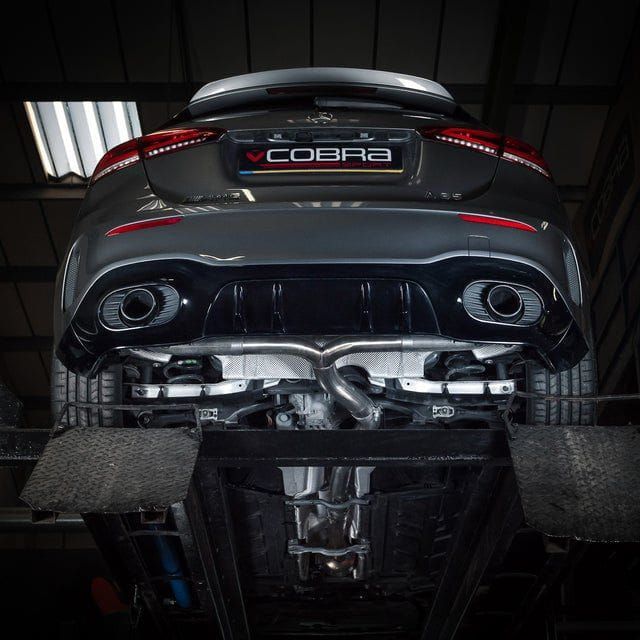Exhaust BackBox
What Is the Function of an Exhaust Back Box?
It takes the collective effort of several key parts of a vehicle to let it glide smoothly over potholes, bumps and uneven road surfaces. One of these is, of course, the exhaust system. It typically consists of five to six different components: a catalytic convertor, centre section, downpipes, petrol or diesel particulate filter, manifold and back box.
Turborevs highlights the importance of the exhaust back box in particular below.
The Purpose of a Back Box
A back box, which can be found at the rear end of the exhaust line, limits the sound produced by the gases that pass through the exhaust system. It also helps to slow down their movement.
This is the most common muffler on vehicles, and is connected to one or more tailpipes — the size and design of which can change the sound made by the exhaust system.
While the original back box was geared towards quietness and comfort, after-market options can now be set up for any specific sound. Each car manufacturer has their own signature sound, ranging from a loud, growling noise to a quiet and discreet sound. The back box is tuned accordingly, to either not drone or blare. However, considering noise regulations and current trends, the average car nowadays has become just quieter than ever before.
Apart from its practical purposes, a back box can also elevate the look of your car. By replacing your worn-out factory tailpipes with shiny stainless steel, you can make it look practically as good as new.
However, it should be noted that, although it is greatly beneficial, a back box is not a major part of a fully functioning exhaust system — which is why it is not even illegal to have it removed. Replacing or detaching it from the exhaust system would not affect the flow of gases from the exhaust; a back box is solely for noise reduction purposes.
The Different Types of Back Boxes
There is a wide range of back boxes that are available for different makes and models, at varying performance levels. Depending on these factors, their prices can differ by a large margin. These can include fully-fledged systems as well as parts that can be fitted right into the exhaust system. It is advised to consult a professional for choosing the right option for your specific car.
Different Products To Help You Make Decision
| Product Name | Description |
| Stainless Steel Twin Tip Universal Exhaust Back Box | Versatile stainless steel construction with twin tips for improved performance and sporty aesthetics. |
| Upswept Twin Tip Stainless Steel Exhaust Back Box | Aggressive upswept twin-tip design crafted from stainless steel, enhancing both style and exhaust performance. |
| Stainless Steel Single Tip Exhaust Back Box | Simple yet sophisticated single-tip design, offering durability, corrosion resistance, and easy installation. |
| Universal Exhaust Back Box with Stainless Steel Twin Tip | Innovative universal design featuring twin stainless steel tips for enhanced visual appeal and performance. |
| 5.5″ x 3″ Universal Exhaust Back Box with Stainless Steel Tip | Compact yet powerful exhaust back box with a stainless steel tip, suitable for various vehicle models (Ford Fiesta, Escort, Mondeo, Transit) |
| 5.5″ x 3.25″ Universal Exhaust Back Box with Stainless Steel Tip and Fitting Kit | Slightly larger variant with a wider exhaust tip for improved gas flow, accompanied by a comprehensive fitting kit. |
In a Nutshell
While not an essential part of a vehicle, an exhaust back box can definitely upgrade your ride. For maximised performance, invest in only high-quality back boxes and ensure regular maintenance. Even though they can generally last for more than 80,000 km, it is important to keep a lookout for any warning signs that they may need to be replaced soon. These indicators could be a considerable increase in the volume of the exhaust, a change in fuel efficiency or unusual vibrations when you are controlling the car’s clutch.








